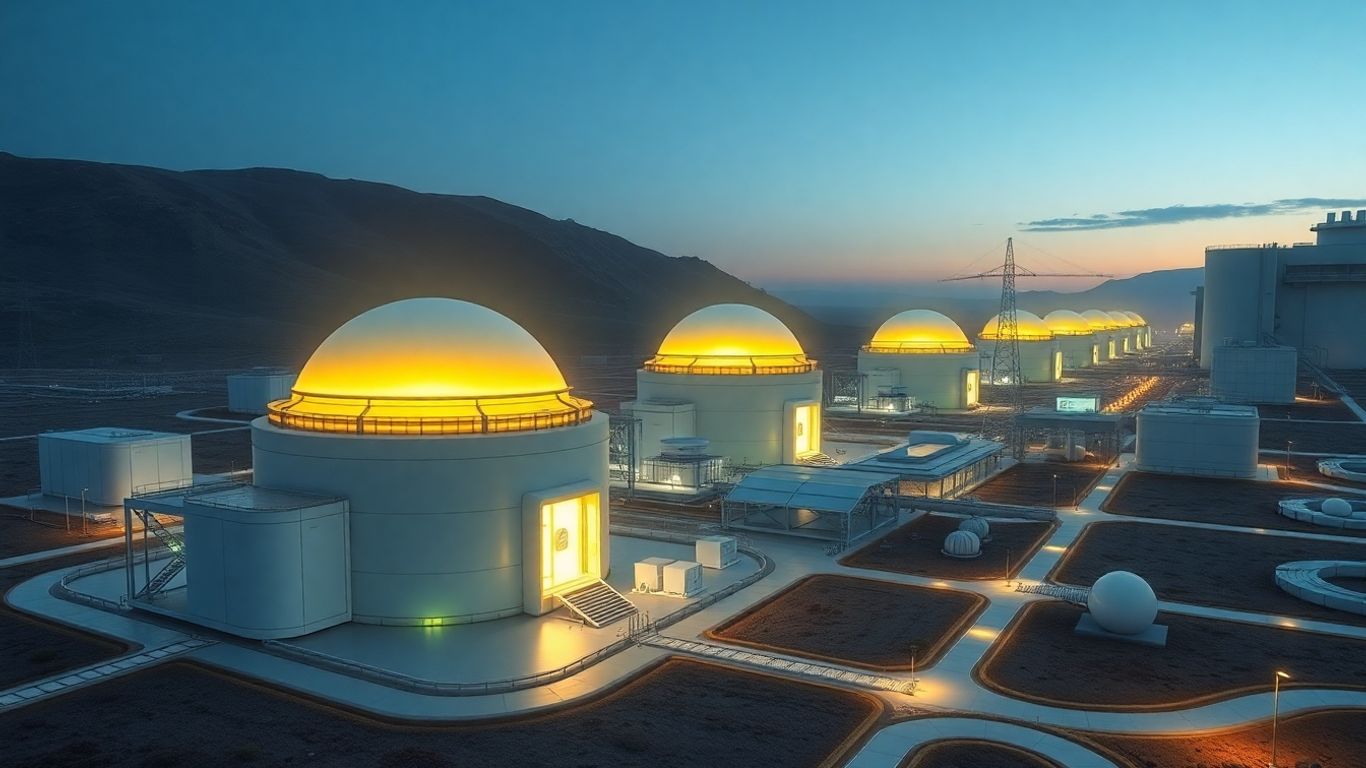The International Atomic Energy Agency (IAEA) has significantly boosted its projections for nuclear power, anticipating a potential doubling of global nuclear capacity by 2050. This optimistic outlook, detailed in the agency’s latest report, highlights the crucial role of Small Modular Reactors (SMRs) and the extension of existing reactor lifespans in achieving this growth.
Key Takeaways
- Global nuclear capacity could more than double by 2050, reaching up to 992 GW in a high-case scenario.
- Small Modular Reactors (SMRs) are expected to contribute significantly to new nuclear capacity additions.
- Extending the operational life of existing nuclear reactors is identified as a cost-effective strategy.
- Climate change concerns, rising electricity demand, and policy support are driving renewed interest in nuclear energy.
IAEA’s Rosy Outlook for Nuclear Energy
The IAEA’s 45th edition of "Energy, Electricity and Nuclear Power Estimates for the Period up to 2050" forecasts a substantial increase in nuclear power’s contribution to the global energy mix. In its high-case scenario, nuclear capacity could expand from 377 gigawatts (GW) in 2024 to nearly 992 GW by 2050, representing a 2.6-fold increase. This upward revision, the fifth consecutive year of increased projections, reflects a growing global consensus on nuclear energy’s indispensable role in achieving clean, reliable, and sustainable electricity.
The Pivotal Role of Small Modular Reactors (SMRs)
Small Modular Reactors (SMRs) are identified as a key differentiator between the IAEA’s high and low-case scenarios. In the high-case projection, SMRs are expected to account for 24% of new capacity added by 2050, compared to just 5% in the low case. These smaller, more flexible reactors are seen as crucial for expanding nuclear power, particularly in countries with smaller grids or limited infrastructure. The IAEA is actively supporting the development and understanding of SMRs through global initiatives, including workshops for policymakers and industry stakeholders.
Extending Reactor Lifetimes and Driving Factors
Another critical factor in bolstering nuclear capacity is the extension of operating licenses for existing reactors. The IAEA report emphasizes that this is the most cost-effective method to maintain nuclear energy’s presence on the grid. Several factors are contributing to the renewed interest in nuclear power, including:
- Climate Concerns and Policy Support: Governments are increasingly committing to reducing carbon footprints.
- Rising Electricity Demand: Growing industrial sectors and technological advancements are increasing energy needs.
- Financial Backing: Development banks are showing increased willingness to finance nuclear projects and SMRs.
- Technological Advancements: Innovations in reactor design, including SMRs, are making nuclear power more accessible and potentially cheaper.
Challenges and the Path Forward
Despite the positive outlook, scaling up nuclear power presents challenges. The high scenario requires an average of 26 GW of new nuclear capacity annually, a significant increase from recent averages. Addressing regulatory frameworks to accommodate new technologies like SMRs, securing adequate financing, and supporting newcomer countries in developing their nuclear infrastructure are crucial steps. The IAEA is actively engaged in assisting nations to overcome these hurdles, aiming to solidify nuclear power’s position as a cornerstone of the future clean energy landscape.
IAEA Predicts Growth in Nuclear Capacity with SMRs Playing a Key Role
- IAEA Predicts Doubling Nuclear Capacity by 2050—SMRs and Reactor Life Extensions Lead the Way • Carbon
Credits, CarbonCredits.com. - IAEA Says Nuclear Capacity Could More Than Double By 2050, With SMRs Playing ‘Pivotal Role’, NucNet.
- IAEA Expands Global Initiative to Boost Knowledge of Small Modular Reactors, IAEA.












